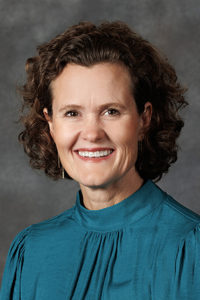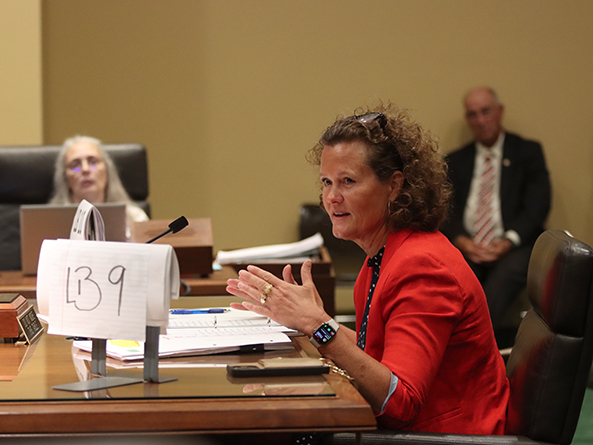Gradual school levy cap reduction, additional state aid proposed
The Revenue Committee heard testimony July 29 on a proposal to reduce the maximum school district property tax levy over the next decade, directing more state aid to public schools.

LB9, introduced by Sen. Jana Hughes of Seward, would, among other changes, decrease the maximum school district levy from the current $1.05 per $100 of taxable valuation to 65 cents for fiscal year 2025-26 and FY2026-27. The levy would continue to decrease in 10-cent increments every two years until reaching 25 cents beginning with FY2033-34.
With the initial levy reduction, Hughes said, the state’s school funding formula would send an additional $1 billion in equalization aid — state aid intended to cover the difference between a district’s needs and its local resources, such as property taxes — to Nebraska school districts each year.
To fund the proposal, Hughes said, LB9 would repurpose approximately $560 million currently dedicated to the refundable income tax credit against school district property taxes paid that was created under the Nebraska Property Tax Incentive Act in 2020. She said lawmakers would have to identify additional funds to cover the remaining cost and approximately $250 million for each further 10-cent reduction.
Hughes said the proposal is an “alternative” to Gov. Jim Pillen’s property tax reform plan contained, in part, in LB1, sponsored by Sen. Lou Ann Linehan of Elkhorn.
As introduced, LB1 also would repurpose the refundable income tax credit program to fund additional school aid. The governor’s plan, however, states legislative intent to replace school general fund levies by school fiscal year 2026-27.
In addition to a more gradual reduction in the maximum levy, Hughes said, her proposal also would provide a “safety net” allowing a school district, with a majority vote of the school board, to levy property taxes to make up for any shortfall in equalization aid from the state.
Hughes said other changes in LB9 would reduce the current spread between high- and low-levy districts and ensure that each district is funded at least in part by local property taxes.
Jason Richters, Centennial Public School Board president, testified in support of the bill. He said the gradual levy cap reduction would make it easier for administrators and school boards to set their budgets.
LB9 also would maintain local control by ensuring that school districts do not rely only on state funding for their operations, Richters said.
“Local patrons should have some skin in the game to ensure local ownership and pride in their schools’ operation and success,” he said.
Bruce Rieker testified in support of LB9 on behalf of the Nebraska Farm Bureau and eight other agricultural organizations. He said the proposal is a “thoughtful and deliberate” approach to reducing the state’s overreliance on property taxes to fund public schools.
“We want this to be right even if it doesn’t mean right now,” Rieker said.
Also in support was Connie Knoche of OpenSky Policy Institute. In the upcoming school year, she said, only 64 of the state’s 244 school districts will receive equalization aid. If the changes in LB9 had been in place, Knoche said, 233 districts would have been equalized.
Bryan Slone testified in opposition to the bill on behalf of the Nebraska Chamber of Commerce and Industry, the Lincoln Chamber of Commerce and the Greater Omaha Chamber of Commerce. He said lawmakers should consider ways to control rapid increases in property valuations before dedicating additional state revenue to property tax relief.
Also in opposition was Spencer Head of Omaha Public Schools. LB9 would repeal the school funding formula’s averaging adjustment, he said, which provides additional aid to certain school districts with 900 or more students. The adjustment provides “essential aid” for the state’s largest districts and contributed approximately $6.7 million to the OPS budget this year, Head said.
The committee took no immediate action on the bill.


